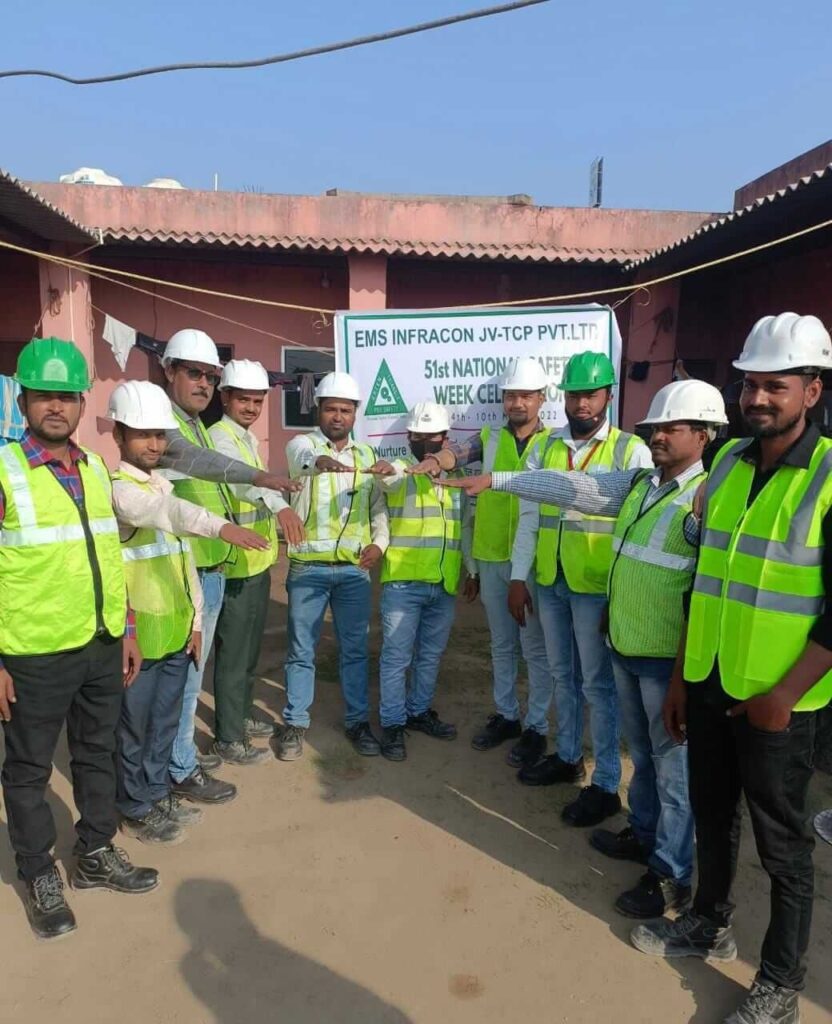1. At a Glance
Delhi-basedEMS Ltdis the kind of company that literally makes India’s cities less stinky — by turning sewage into something slightly more dignified. At a market cap of₹2,525 crore, the company trades at₹454 per sharewith aP/E of 15.5. But before you think it’s a steady, boring utilities play — think again.
In Q2 FY26, EMS reported asales decline of 26.1% QoQand aprofit crash of 43.1%. Despite that, it still maintains anROE of 20.7%,ROCE of 26.9%, and acurrent ratio of 7.96— basically saying “we’re flush with receivables, not with cash.”
And speaking of cash, this company is the classic Indian EPC paradox:₹340 crore of profit in two years, but negative cash flow from operations. In other words, they’re booking profits faster than the government releases funds.
If that didn’t sound wild enough, the company has an₹1,800 crore order book, is expanding intoreal estate EPC, and just appointeda new CEO, Harish Kumar Kansal, in November 2025. Welcome to EMS — where wastewater turns into shareholder tears (and maybe, someday, dividends).
2. Introduction
Picture this: You’re an Indian city after a heavy monsoon. Roads flooded, drains choked, and politicians promising another “mission mode” solution. Who do they call? Not the Ghostbusters — butEMS Ltd, the silent contractor behind your city’s sewage treatment plant, quietly digging trenches while local leaders cut ribbons.
Founded as an EPC (Engineering, Procurement & Construction) player focused onwater and wastewater management, EMS operates in the glamorous world ofsewage pipelines, treatment plants, and waste disposal. The kind of work nobody wants to talk about but everyone desperately needs.
Yet, for all the dirty work, EMS’s financials shine surprisingly clean on paper —high margins, strong ROE, and zero investor drama (so far). But scratch beneath the balance sheet, and you’ll find some red flags waving like wet towels —negative cash flows,rising receivable days (now at 142), anda heavy dependence on state-funded projectsthat move slower than a Delhi traffic jam in July.
The company’s stock is down39% in a year, largely thanks to a sector-wide derating and maybe because investors realized you can’t pay dividends with “accrued government bills.” Still, EMS is holding its ground — with a massive bid pipeline, new territories in the South and Northeast, and a growing appetite for real estate contracts.
So, can EMS clean up its act and cash flows at the same time? Or will it drown in its own working capital? Let’s dive in — but keep your nose covered.
3. Business Model – WTF Do They Even Do?
In one line:EMS Ltd builds, fixes, and maintains the water and sewage systems that keep India from becoming Venice.
Its business runs throughtwo main divisions:
- Water & Sewerage Projects (70%)– The big-ticket stuff. EMS designs and buildsSTPs (Sewage Treatment Plants),CETPs (Common Effluent Treatment Plants), andWTPs (Water Treatment Plants)— usually forUP Jal Nigam,Bihar Urban Development, and other state agencies that love long tenders and longer payment cycles.
- Capacity highlight:80 MLD (Million Liters per Day)Minimal Liquid Discharge systems.
- Bonus feature: long-term O&M contracts that ensure recurring revenue (and recurring follow-ups with government accountants).
- Civil & Electrical EPC Projects (30%)– Substations, transformers, and 33/11 KV setups — because apparently, sewage wasn’t shocking enough. This segment focuses onpower infrastructureandcivil worksfor public bodies.
Together, these make EMS the kind of company that will literally connect your toilet to your tap (metaphorically speaking).
Their model is EPC-Plus-Maintenance:Design → Build → Install → Maintain → Chase payment for 3 years.
The company’s clients? Mostlygovernment departments, occasionally supported byWorld Bank-funded schemeslike AMRUT and NMCG (National
Mission for Clean Ganga). Which means — if your payment depends on both the Ganga and bureaucracy — you better meditate.
4. Financials Overview
Quarterly Snapshot (Consolidated)
| Metric | Latest Qtr (Sep FY26) | YoY Qtr (Sep FY25) | Prev Qtr (Jun FY26) | YoY % | QoQ % |
|---|---|---|---|---|---|
| Revenue | ₹172 Cr | ₹233 Cr | ₹239 Cr | -26.1% | -28.0% |
| EBITDA | ₹36 Cr | ₹69 Cr | ₹54 Cr | -47.8% | -33.3% |
| PAT | ₹28 Cr | ₹50 Cr | ₹38 Cr | -43.1% | -26.3% |
| EPS (₹) | 5.1 | 8.9 | 6.8 | -43.1% | -25.0% |
Annualised EPS = ₹20.4 → P/E ≈ 22.2 (at ₹454/share)
Commentary:When your revenue dips by 26% and profits halve, you either blame monsoon delays or bureaucratic constipation. EMS’s Q2 looked weaker than the Yamuna’s flow in summer, but margins are still decent at ~21%. The issue isn’t profitability — it’scash realization. Projects are running, but payments are running away.
5. Valuation Discussion – Fair Value Range (Educational Purpose Only)
Let’s triangulate EMS’s fair range using three methods:
(a) P/E Method
- EPS (TTM): ₹29.4
- Industry P/E: 22.3
- EMS P/E: 15.5
Fair Range = ₹29.4 × (15 – 22) =₹441 – ₹647
(b) EV/EBITDA Method
- EV = ₹2,552 Cr
- EBITDA (TTM): ₹239 Cr
- EV/EBITDA = 10.7x
- Industry Median ≈ 12x
Fair Range (EV/EBITDA 10–12x) = ₹2,390 – ₹2,870 Cr→ Equity Value = ₹420 – ₹520 per share
(c) DCF (Simplified)Assume 10% growth, 12% WACC, 4% terminal growth → intrinsic value range₹400 – ₹480.
📢Educational Disclaimer:This valuation range (₹400–₹650) is purely for educational discussion, not a price target or investment advice.
6. What’s Cooking – News, Triggers, Drama
2025 was eventful — like a government project file passed between departments.
- July 2025:Got a ₹98.8 Cr sewerage contract fromUP Jal Nigam(execution: 21 months).
- June 2025:Bagged a ₹782 Cr pollution abatement order fromKolkata Municipal Corporation— that’s almost a year’s revenue in one order.
- August 2025:Won a ₹104 Cr water infra contract.
- October 2025:Another ₹183.8 Cr sewerage order for Fatehpur.
Clearly, they’ve mastered the “lowest bidder” art.
But then came the plot twist —August 2025

